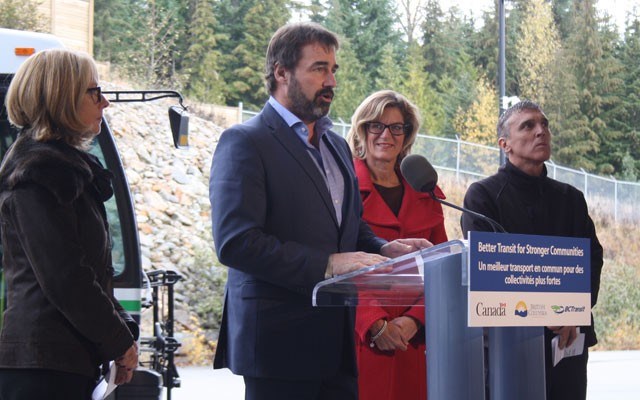The Resort Municipality of Whistler (RMOW) is hoping to get a better understanding of how highway closures are managed on Highway 99.
It issued a request for proposals on Oct. 17 seeking independent consultant services to study the issue.
"(The consultant) will collect data about existing practices employed in the management of closures," said Mayor Nancy Wilhelm-Morden.
"It will inform discussions that we'll have with the province and with the feds on how those closures can be reduced or decreased in time."
In 2015, there were 566 highway closures on the Sea to Sky, of which 146 were unexpected, according to statistics provided by the Ministry of Transportation.
Expected closures are those related to events, like GranFondo, while unexpected closures are related to emergency response.
Of all the closures last year, only two per cent were full closures.
The average length of the closures during emergency responses was about two hours.
Some of the early ideas being tossed around for reducing closure times include having accident analysts stationed closer to the Sea to Sky region, or using drones to take photographs and measurements of accident scenes, Wilhelm-Morden said.
"(Highway closures have) a negative impact on the experience both for residents and guests alike, then there is of course the economic impact from people missing flights, people heading north who just turn around and go home, cancelling their hotel reservations, there's the economic cost to residents, who may be trying to get home or trying to get to their job," she said.
"You don't have to be overly imaginative to see that there is a very real economic cost to this as well."
Closures related to accidents, especially if there are injuries or fatalities involved, can take far longer than the average of two hours. It is not unusual for the highway to be closed for twice that long.
In past accidents, the Integrated Collision Analysis and Reconstruction Service (ICARS) has had to come to the scene from Vancouver. The ICARS investigators require a well-preserved scene — another factor in keeping the entire highway plus the shoulder closed to traffic.
Prior to the upgrade of the Sea to Sky Highway for the 2010 Winter Olympic and Paralympic Games there was an average of 94 serious accidents a year resulting in up to six deaths.
From Jan. 1, 2010 to Dec. 31, 2015 there were 418 serious collisions with an average of 70 serious collisions and two fatalities per year.
Since the Sea to Sky Highway Improvement Project finished in 2009 the number of collisions has gone down significantly, with a 25 per cent drop in serious collisions.
On Oct. 20, representatives from the Ministry of Transportation — minister of transportation Todd Stone included — met with corridor officials in Squamish to discuss the highway and transit options along it.
BC Transit has formed a working group with representatives from local government and First Nations to explore opportunities for new transit service that will connect communities along the Sea to Sky corridor. The input from this group will add to the recently completed BC Transit Sea to Sky Transit Future Plan, which identified new and expanded regional and inter-regional transit services as a high need for the area.
"What the minister was doing was talking about ongoing support for new and improved public transit options from Pemberton to the North Shore, and of course, in order for a project like that to be successful, all levels of government have to be involved," Wilhelm-Morden said.
"We are part of that with BC Transit's working group, and there are a number of partners involved."
Stone also formally announced a Sea to Sky Transit Study on Oct. 20, which will look for ways to enhance service throughout the corridor.
"Improving transit service throughout the Sea to Sky corridor will help to reduce traffic congestion and support tourism, as the region experiences growth," Wilhelm-Morden said in a release on the announcement. "Whistler strongly supports these plans moving forward to make transit service more accessible to both residents and visitors."
The study includes an online public engagement component that runs until Nov. 15 — head to www.bctransit.com/seatosky for more info.
On Oct. 21, representatives from the federal, provincial and local governments also announced $3.2 million for a new natural gas compressor and fuelling station at the Whistler Transit facility as part of the on-going discussions around improving transit.
Eventually, Whistler will also have 25 new compressed natural gas buses, fully decked out with the latest technology, including closed-circuit TVs, tracking apps and more.
"The compressor goes in next year, the buses come the year after," Wilhelm-Morden said.
"These are all replacement buses and they'll be coming with some of the new technology."




